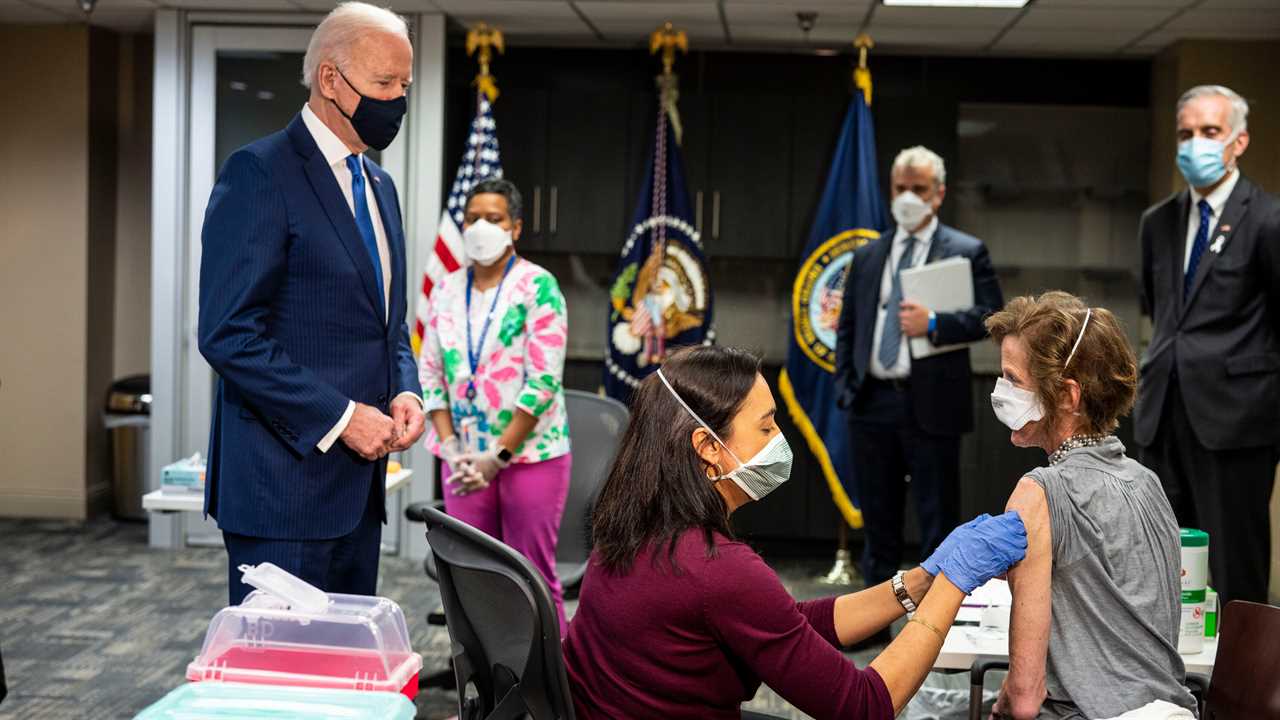
WASHINGTON — Denis McDonough, the secretary of veterans affairs, said this week that he was considering a move to compel workers at V.A. hospitals to get vaccinated, fearing that centers with low vaccination rates were risking the health of veterans seeking care.
The military is also struggling to fully vaccinate more troops across all service branches. While the Army and Navy are outpacing the civilian population in vaccine uptake, the Air Force and the Marine Corps have faced greater challenges. About 68 percent of active-duty members have had at least one dose, officials said.
President Biden could legally require members of the military to get vaccinated, but so far he has declined to exercise that power even as the Delta variant has become an increasing threat to unvaccinated Americans.
“The Delta variant poses a threat to that return to normal,” Dr. Terry Adirim, the acting assistant secretary of defense for health affairs, said this week. “We are particularly concerned with the impact of the Delta variant on our unvaccinated or partially vaccinated population and its potential spread at installations that are located in parts of the country with low vaccination rates.”
The Department of Veterans Affairs struck a deal this week with the employee union to offer workers four hours of paid administrative leave if they prove that they have been fully vaccinated. “It would be negligent to not be considering the full range of opportunities that we have to ensure that we’re taking every step possible to protect our vets,” Mr. McDonough said.
Mr. Biden set a goal of having 70 percent of adults at least partly vaccinated by July 4, but officials concede they will fall short as demand stagnates. “With vaccines available across the country, the suffering and loss we are now seeing is nearly entirely avoidable,” Dr. Rochelle Walensky, the director of the Centers for Disease Control and Prevention, said on Thursday.
The military has worked hard to combat vaccine misinformation in its ranks since the shots first became available. More than 80 percent of active-duty service members are under 35, a group that often views itself as impervious to coronavirus infections. Many worry that the vaccines are unsafe, were developed too quickly or will affect fertility.
Among active-duty members in the Navy, 77 percent have had at least one shot, Pentagon officials said; in the Army, the figure is 70 percent, well above civilian rates. In the Air Force, 61 percent of service members have had at least one dose, and in the Marine Corps, it is 58 percent, barely more than it was at the beginning of the year, when shots became available.
Military leaders have long insisted that they cannot require coronavirus vaccinations — as they do for myriad other inoculations — because each type is being administered under an emergency use authorization and has yet to receive formal approval from the Food and Drug Administration.
Under federal statute, however, the option to refuse “may be waived only by the president” if it is determined that refusing “is not in the interests of national security.” The White House did not respond to requests for comment.
Latest Updates
- Portugal, where the Delta variant is spreading, reintroduced nighttime curfews in its biggest cities and tourism hub.
- Give Africa greater access to buy vaccines, a special envoy urges the European Union.
- Americans can go to Europe, but not Canada. Why is that border still closed?
The reluctance among troops complicates the relationship between military installations and the communities that surround them, and it can hinder deployments abroad. For a recent mission to Europe from Fort Bragg, N.C., for instance, several unvaccinated service members had to be replaced with those who had received their shots because of quarantine rules in the countries where they deployed. Military barracks are also known risks for transmission of respiratory infection, said Dr. Tom Frieden, a former C.D.C. director.
Among the 21 people who had the coronavirus in hospital centers run by the Defense Department, none were vaccinated, officials said this week.
“The benefits of vaccination are remarkably clear,” said Lt. Gen. Ronald J. Place, the director of the Defense Health Agency.
A lack of vaccine acceptance among hospital workers who care for veterans could be more worrisome; because of their average age and service-related injuries and illnesses, veterans can be more vulnerable to infection. Nearly 12,500 veterans have died from coronavirus-related complications since the pandemic began.
Among the roughly 380,000 people who work for the Department of Veterans Affairs, 298,186 are fully vaccinated, or about 78 percent — higher than the national average of about 46 percent but far below what Mr. McDonough said he wanted for those providing health care.
About 20,300 V.A. employees have contracted the coronavirus since March 2020, and 190 over the past month, after vaccines were widely available in the United States. While some facilities — such as a V.A. center in New Orleans, once a virus epicenter — have vaccinated 85 percent of workers, that rate was closer to 59 percent in others, like a center in St. Cloud, Minn.
Mr. McDonough has traveled to Alabama, Florida and Louisiana “to underscore that the best thing folks can do to protect our vets is to get vaccinated themselves,” he said. But if the four hours of paid time off did not persuade employees, he said, “We are making sure that we understand the full range of options that we have. I think that’s precisely what we’re wrestling with.”






